Copper and Bronze Erlitou-Erligan (part 6)
that it’s not quick to get a successful run,
not a brave victory, not a wise one - bread,
and not rational wealth ... but time and opportunity for all of them. "
(Ecclesiastes 8: 11)
So, today we know that the centers where our ancestors learned to process copper, today revealed not one, and not two, but several. Well, first of all, it is Chatal-Hüyuk and, perhaps, several more “cities” like it, located nearby. Then this is the region of the Great Lakes in the USA, even if everything there was limited to processing native copper and, at best, its hot forging. Further, we can assume that the knowledge that copper can be processed has spread throughout the Middle East to Cyprus, then from there to Crete and the Cyclades, and then to mainland Greece, Malta, Italy and Spain, and to Egypt, to the Sumerians and the Caucasus, and from there to the Black Sea steppes.
Ancient Chinese bronze dagger inlaid with Joe dynasty.
How about regions like ancient India or China? There, people thought of copper processing themselves, how did they think of stone processing, or did some migrants who brought them this technology too? But one thing is to sail on such a sea as the Mediterranean, one can say - from island to island or even because of the coast, and quite another, it is not clear for what to cross the high mountains and deserts.
First people in china
About the same China, we know that at one time, namely 600 - 400 thousands of years ago, during the period of glaciation, there lived a synanthropus or “Peking man” (hence its name), a subspecies of the human race close to Pithecanthropus, however somewhat later and developed. It is believed that the Sinanthropus knew the fire, knew how to make stone tools and were ... cannibals, hunting on their own kind. Many scientists consider them to be a dead end in the development of mankind, however, no matter what, but people in China have been living for a very long time. However, in the Central and Southeast parts of the Asian continent, people have always lived “for a very long time”, as evidenced by archaeological finds in Central Asia, and in India, and in the territory of the same China. In any case, they already lived in these areas in the Neolithic and the Aeneolithic era that followed, as evidenced by the traces they left behind.
For example, in the territories of modern Southern Turkmenistan and Fergana, archaeologists have discovered monuments that are very similar in appearance to the Eneolithic monuments of Southwest Asia. These are the so-called Tepe - high hills, consisting of layers, from successively arising on them villages of the end of the IV – beginning of the III millennium BC. er In them were found the remains of houses made of mud bricks, the walls of which were covered with paintings of geometric patterns. The inhabitants of these villages were engaged in farming, since during the excavations stone grain-graders were discovered.
Cattle breeding in these places did not arise immediately: for example, the bones of sheep, bulls and pigs are found here for the first time only on the fourth meter, if we assume from below; and only later are the bones of these animals more and more.
Dwellings of the Botai culture. National Museum stories Kazakhstan.
A vivid monument of the Eneolithic era was the settlement of Botai in the north of Kazakhstan, referring to the III - II millennium BC. and covering 15 hectares. Here found the remains of 158 dwellings, the walls of which were covered with animal skins, and in the center was a hotbed for cooking and heating the dwelling. Stone implements (arrowheads, spears, knives and axes), bone needles, earthenware and a huge number of horse bones were found, which suggests that the horse was already tamed by horsemen, and not only tamed, but also , used by them for riding and also for hunting their wild relatives! Products not only from stone but also from copper were found in the town of Shebir. Ceramic dishes shebirtsy was egg-shaped, and the pots they were covered with a characteristic comb ornament. Surprisingly, for some reason they were very fond of wearing necklaces from the shells of sea mollusks, although they lived very far from the sea, and their main occupation was hunting! At the same time, the ornaments of them were not only very skillfully processed, but also drilled with a drill.
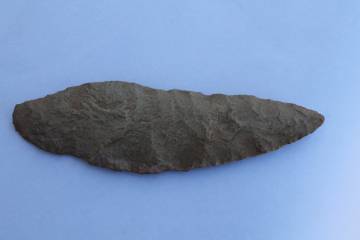
Flint knife from the tract Botai. National Museum of History of Kazakhstan.
In the other Eneolithic settlements of Central Asia there are dishes, which are also mainly painted with geometric patterns. Moreover, a number of patterns similar to the paintings of the Two Rivers and Elam. Labor tools and weapons local residents made of flint, copper products are already found in the lower archaeological layers. This - awl, leaf knives and some other items. This culture was called the Anau culture, and it is of exceptional interest, primarily because it allows to establish the fact that the ancient population in the south of Central Asia was associated with the equally ancient southern centers of Sumer and Elam. There is evidence to suggest the connection between Anau and the Harappan culture of India (III - the beginning of the II millennium BC.). However, Anau could well serve as a link not only between the ancient civilizations of Dvorichya and India, but also the civilizations of ancient China. The fact is that Chinese archaeologists found in ancient Eneolithic settlements in Xinjiang samples of painted ceramics, similar to Anau culture in their patterns. That is, it can be assumed that these monuments of Xinjiang and North China are to a certain extent connected with the ancient Eastern cultures of both India and Western Asia.
Stone walls and the first copper
Well, in India itself, as far as this can be judged on the basis of available archaeological finds, the transition to the era of metals previously occurred in the mountainous regions of Baluchistan (in the western part of modern Pakistan), adjacent from the west to the Indus valley. The lower layers of the oldest settlements found here belong to the Neolithic era and date back to the first half and middle of the fourth millennium BC. er But in subsequent layers, dating from the end of IV and the first half of III millennium BC. e., already clearly visible transition to the copper age. The settlements of this time become more comfortable and consist of mud brick buildings, sometimes with a stone foundation; some of them are surrounded by walls of truly cyclopean masonry. The inhabitants of these villages is clearly known copper. They make the dishes with the help of potter's wheel and cover them with various multicolored ornaments. The share of farming in their economy was apparently still insignificant, but cattle breeding, by contrast, is very developed. Moreover, the farm has already used a horse, but for what purpose, alas, it has not been established.
Bronze Scythian dagger. Museum of St. Petersburg Mining University.
It was during the Eneolithic era that the tribes living in India were technically armed enough to begin the development of the Indus River Valley, where in the middle of the 3rd millennium BC. er there is an "Indian civilization" or the culture of Harappa, which in many ways can already be considered a class society.
The first copper culture of Yanshao
Yes, but if the ancient Chinese could exchange pottery with the inhabitants of Central Asia, could they not have learned through them how to process metal? This is certainly worth thinking about, but for now it is important to note the fact that China’s most ancient painted dishes are very similar to painted dishes from the Eneolithic settlements of India, the Middle East and ancient Europe, and are found both in the west of the country and in Manchuria and also in the south . One of the most ancient developed cultures of China is the Yanshao culture, one of the settlements of which is “Yanshao site” located on the right bank of the Yellow River, somewhat lower than the confluence of the Wei River into it. Yanshaostsy lived in round or rectangular semi-dwelling with a conical roof, which was supported by pillars, which stood in the center of the dwelling, and were engaged in farming. But hunting and fishing also played a significant role in their lives. Traditional Neolithic tools were used, while copper was unknown to them for a very long time. Only in the later layers of the Yanshao culture, dating back to the end of the fourth millennium BC, did the first traces of copper processing be found.
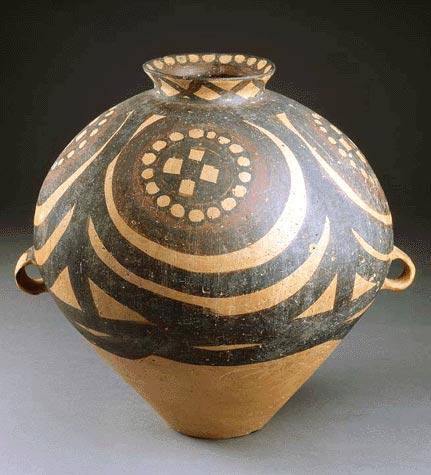
Characteristic ceramic vessel culture Yanshao. British Museum, London.
At the same time, an anthropological study of human remains from the burials of Yanshao shows that its population in its ethnic relation was mostly very close ... to the modern population of these localities. Moreover, this proximity is confirmed by the presence of three-legged vessels, very characteristic of later Chinese ceramics. And, judging by the findings, the farmers of ancient China, who knew the metal, not only came into contact with hunter-gatherers in the steppes and with fishermen of coastal territories, did not know the metal, but also had quite close ties with them and ... exactly the same connections existed with them and with other related cultures of farmers.
And again the copper and the walls ...
Culture Yanshao, apparently, lasted until the end of the III millennium BC. e., when in North China there were big changes in the economy and culture. In the lower reaches of the Yellow River, in Shandong and Shanxi, as well as in the Shanghai and Hangzhou areas, a large number of settlements of the so-called Longshan culture were found, and copper and ... bronze items were found in them! It is believed that the culture of Longshan originated on the basis of the culture of Yanshao, but influenced from outside by migrants from Central Asia! They brought here with themselves a potter's wheel, new varieties of grain (wheat from the Middle East) and breeds of cattle (goat, sheep, cow). Quite often, the settlements of Lunshantsy were surrounded by earthen ramparts, on which a palisade stood, and the shaft of one of them had a circumference of 15 km. The huts had the appearance of round huts with a furnace and were no longer buried in the ground. Next to the stoves, stove benches with rows of parallel chimneys passing through them, similar to the kans in later Chinese fans, were arranged, so that this heating system of dwellings, as we see, has a very long history. The population of these villages was engaged in farming, but cattle breeding was also developing - sheep, pigs, bulls and horses were bred here. Ceramics was very different from Yanshao, primarily because it was unclear why there were no paintings on it, and it was gray or completely black. But the three-legged vessels, beloved by the ancient Chinese, called and connecting the Eneolithic era in China with the subsequent history of its material culture up to the Han period (i.e., the end of the 1st millennium BC), to archaeologists met here.
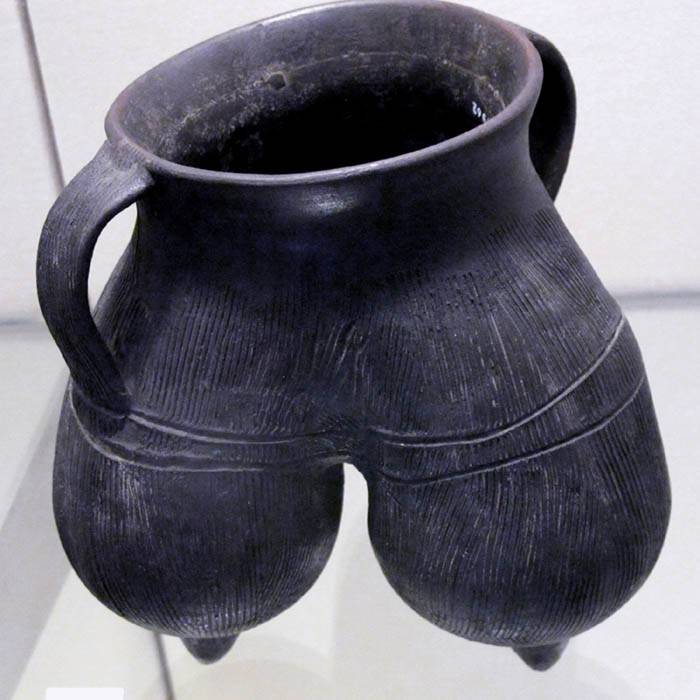
Characteristic three-legged culture dishes Longshan. British Museum, London.
Well, the very presence of fortifications around the villages suggests that their inhabitants were from whom to defend themselves and what to protect and, accordingly, about the complication of the social relations that existed between them. Obviously, it was at this time that the foundation of the new society was taking shape, the basis of which was slavery and property inequality. But since we are talking about copper metallurgy, again, it is not very clear whether the ancient Chinese themselves thought up how to process copper, or did they borrow this technology from some other nations, along with painted ceramics samples .
So some experts believe that the metallurgy of copper and bronze originated in China independently, that is, in fact it was also a matter of chance, and therefore it can also be attributed to one of the centers of origin of metalworking. Others insist that this art came to the Chinese from the West. Moreover, there are arguments both in those and in others, and it remains only to hope that subsequent finds will be able to clarify the situation.
"The Mystery of Erlitou-Erligan"
Its essence lies in the fact that the Erlitou culture dated by archaeologists 2100 - 1800 (1500) is considered to be the earliest culture of the Bronze Age in North China. BC. However, experts state that its characteristic bronze casting technique is not the earliest stage of local bronze metallurgy. But the earlier culture, preceding Erlitou, was not found in the Yellow River basin, although isolated finds of copper and bronze items were found there at the sites of the more ancient Lunshan culture. These findings allowed historians to make the assumption that local bronze metallurgy just arose on the basis of its achievements, as a result of which it has an independent origin.
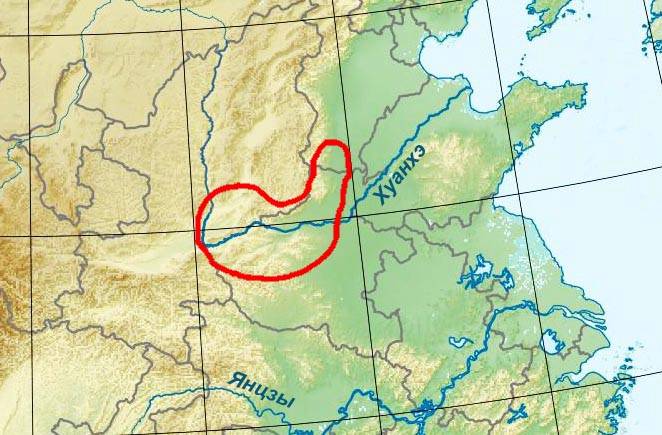
Area of culture Erlitou.
The problem, however, is that the then Chinese metallurgy was distinguished by the highest technology of bronze casting. That is, not only that somehow, very suddenly the Chinese Erlitou switched from copper to bronze. They also used technologies that other nations did not even suspect. At that time, metallurgists from the West and the Middle East made bronze products by forging, casting into sand or stone open molds on top of the mold, and used the “lost mold” technology, here they mastered a much more laborious and original “lump molding” method. And since this method combines both ceramics and metallurgy techniques, this indicates a general high level of the then Chinese foundry technology.
Vessels for wine culture Erlitou. City Museum Loyang, China.
The essence of this method was as follows. The model for casting was made not from wax, but from clay, on the surface of which the necessary relief was cut. Then she was removed from the form of clay, sticky piece after piece, on a previously prepared model. After that, on each of the pieces from the inside, a fine finishing of the relief was carried out, and then these pieces of clay were burned, which also required considerable skill, because in the process of finishing and burning the drawing should not be broken.
Stone tools labor culture Erlitou. OK. 1500 BC Provincial Museum Heyang, China.
The original clay model was ground outside the thickness of the walls of the future casting, and as a result, a mold was obtained consisting of two layers, because it was covered with burned parts of the outer form outside. The seams and joints between them were not tightly sealed up specifically so that metal would flow into them. And this was done for a reason, and not from inability, but solely to ensure that the metal, frozen in the seams, could be given the appearance of a special elegant edge, which introduced into each such product a certain special decorative charm. Moreover, the use of vertical casting seams to decorate molded products became, over time, even the tradition of Chinese metallurgical art.
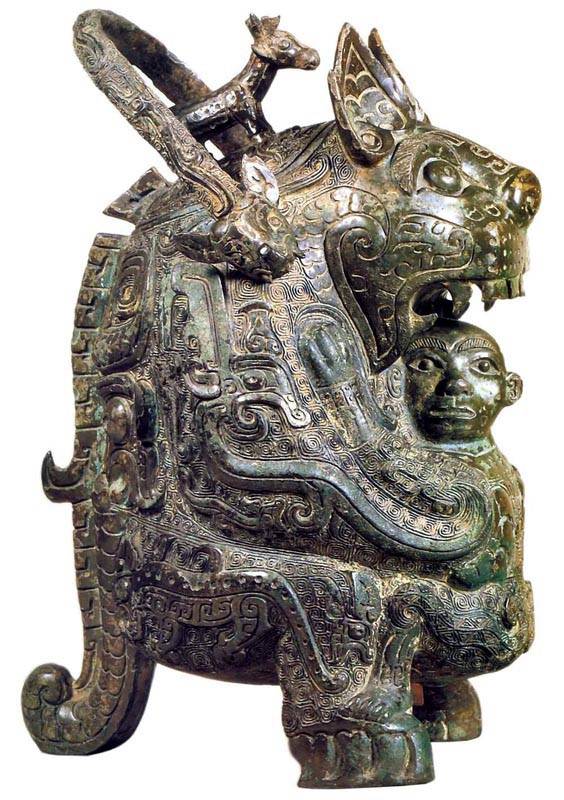
Ancient Chinese bronze vessel of ritual purpose, made in the technology of "lump molding". Shang Dynasty
Well, after the form was ready, molten bronze was poured into the empty space between the outer and inner walls. And it is clear that it was simply physically impossible to remove the casting without breaking the mold, so each such casting was a completely unique product, because the mold for its manufacture could not be used anymore! Interestingly, such product parts as handles or legs of a vessel were cast separately and inserted into a ceramic mold so that during casting they would be “welded” to it molten metal. Sometimes they acted differently: first the body was cast, and the parts were “welded” to it when re-casting.
Well, as for the settlements of Erlitou culture and Erligan’s related culture (sometimes referred to as “Erligan phase” that existed in 1600 - 1400 BC), this is nothing like the ancient cities, and the ruins of palaces and bronze smelting workshops were discovered. Moreover, if in the first phase of its development the city occupied an area of 100 ha, in the second phase (each phase lasted about 100 years) already 300 ha, and in the third there was already a walled palace. Then the phase of decline began, but the city continued to remain a city and buildings were still built in it, and bronze articles were cast in workshops.
Stone form for casting axes (Sardinia).
Erligang culture was larger and more developed, and the perimeter of its length surrounded by a wall about seven kilometers. There is also found a large palace complex and several craft workshops (for some reason outside the city walls), including a workshop casters. Here, metal implements and weapons were found knives, awl, chisel, arrowheads and Klevtsov. Chemical analysis of these and other metal products shows that they were all made of bronze. However, instead of tin, zinc was used in the alloy. In particular, the chemical composition of the metal from which the bit was molded found there, was as follows: Cu - 98%, Sn - 1%; and at the vessel: Cu - 92%, Sn - 7%.
In social terms, erligansky Erlitou culture-complex (and the whole "phase Erligang culture") different from the replaced it anyanskoy culture that inequality has not been as noticeable: the leader was more elder community collective than its sovereign ruler. No authority regalia, accessories of high positions, or graves in the form of tombs with mass burials of people and things were found. Although the palaces were already. No evidence was found and any noticeable traces the development of worship and rituals designed to serve social and tops symbolize their greatness, although people already engaged in fortune-telling, and cast vessels quite clearly for ritual purposes.
Chinese bronze dagger of the Joe dynasty.
In any case, amazing unusually high level of metal processing technology, which seemingly has not brought any where and appeared at erlitoustsev-erligantsev not clear how. Possible "time and chance" were for them, or so high technology were the result of concerted efforts of the ancient masters, or, again, suddenly broke out at one of them in the head inspiration ?! Of course, we can say that the archaeological excavations in China are relatively new, and that is the "missing link" is still found. However, today the picture is as follows: one-piece copper and bronze coming to China from neighboring western lands and peoples from living there, and then - bang, and immediately an unexpected rise of high-level technology.
(To be continued)
- Vyacheslav Shpakovsky
- From stone to metal: ancient cities (part 1)
The first metalwork and ancient cities: Chatal-Hüyuk - "the city under the hood" (part 2)
“Real Copper Age” or from the old paradigm to the new (part of 3)
Ancient metal and ships (part 4)
Bronze age on the island of Cyprus or "migrants are to blame for everything"! (part of 5)
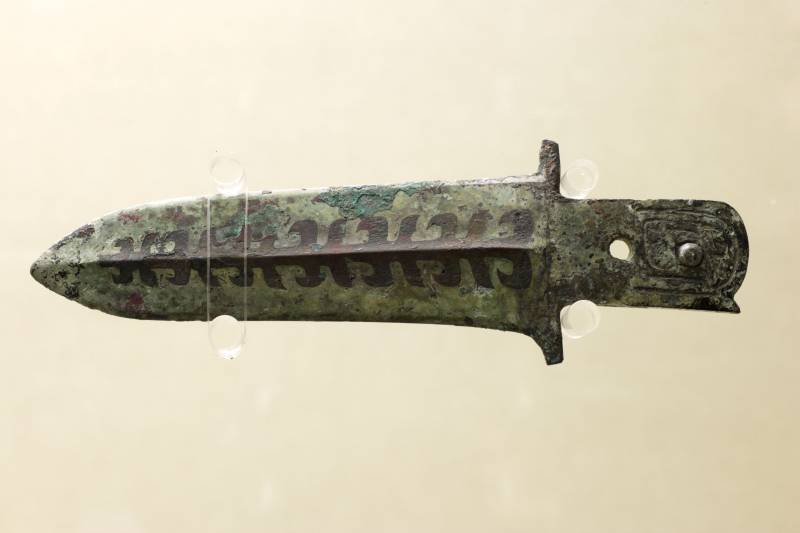
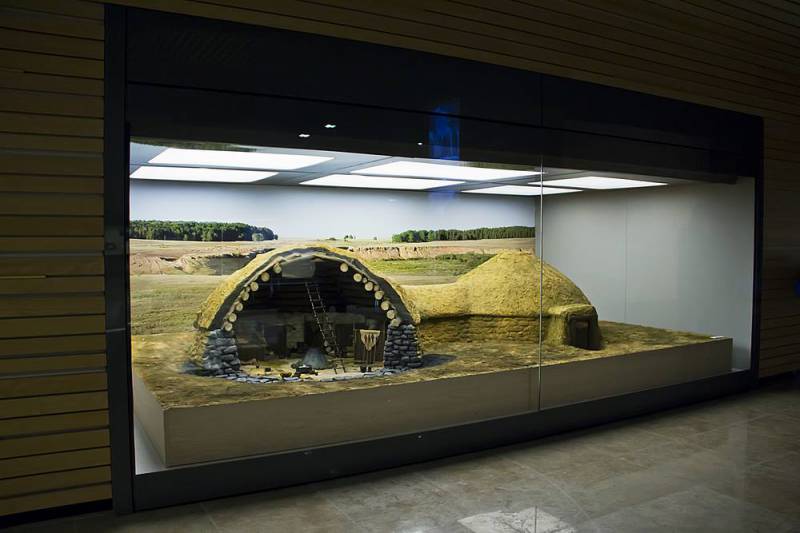
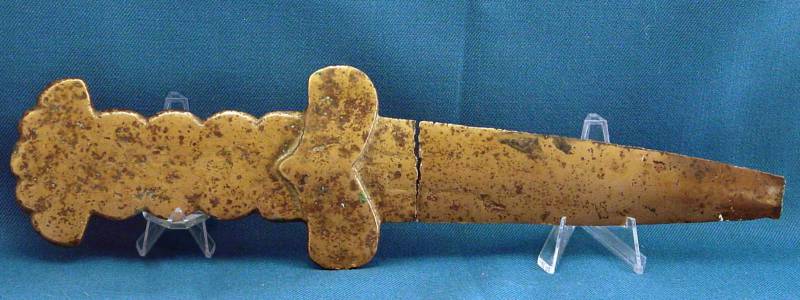
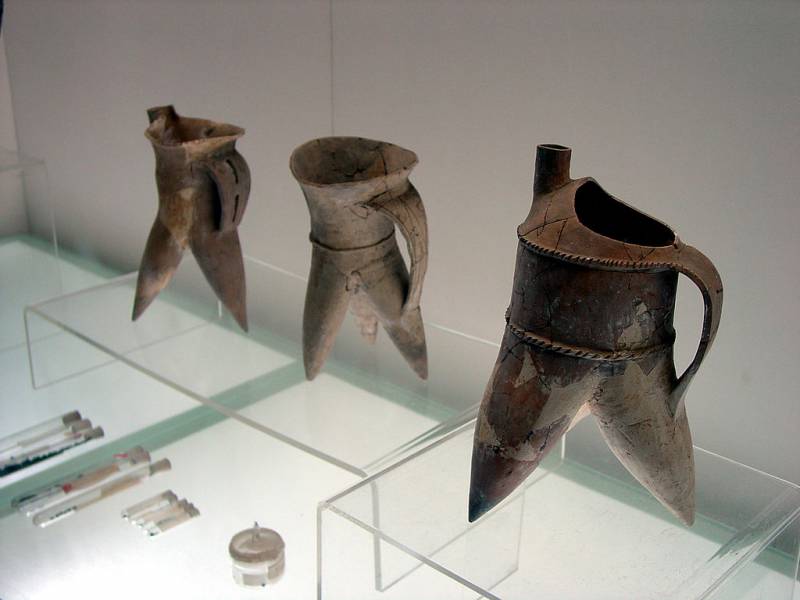
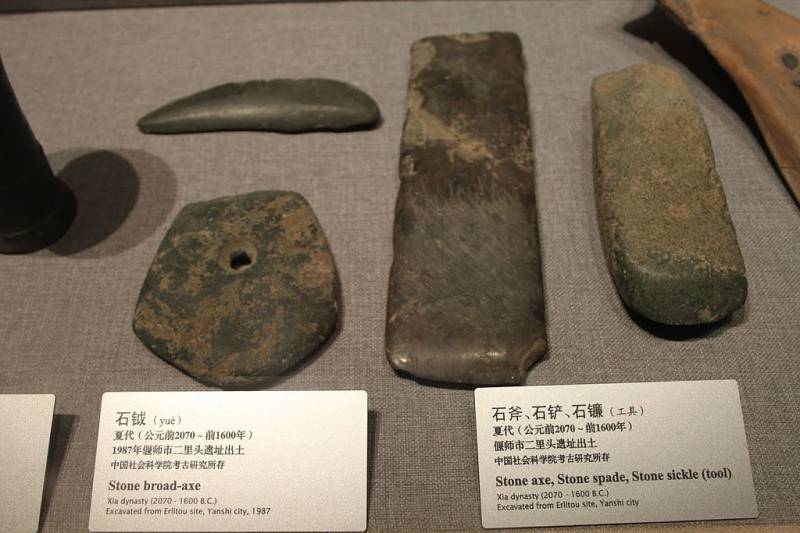
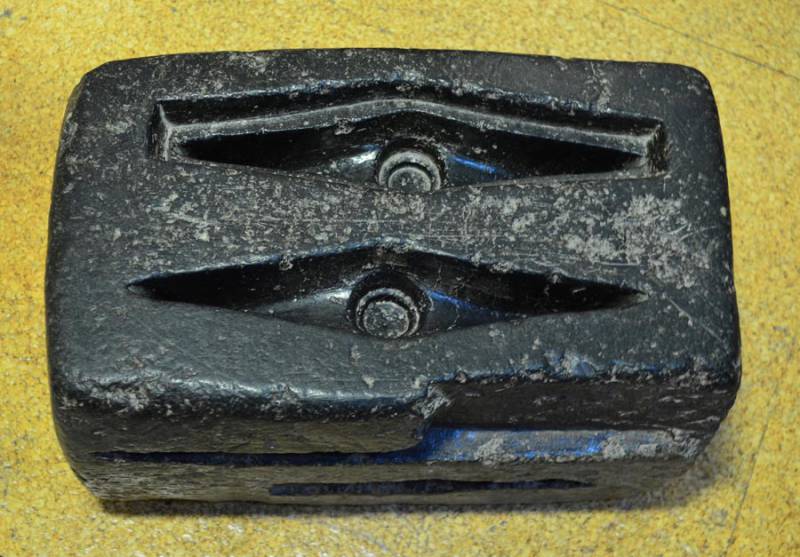
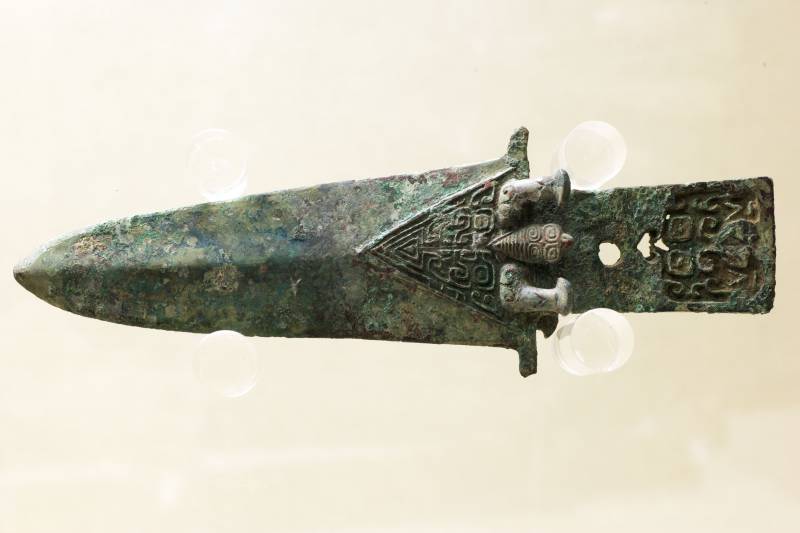
Information